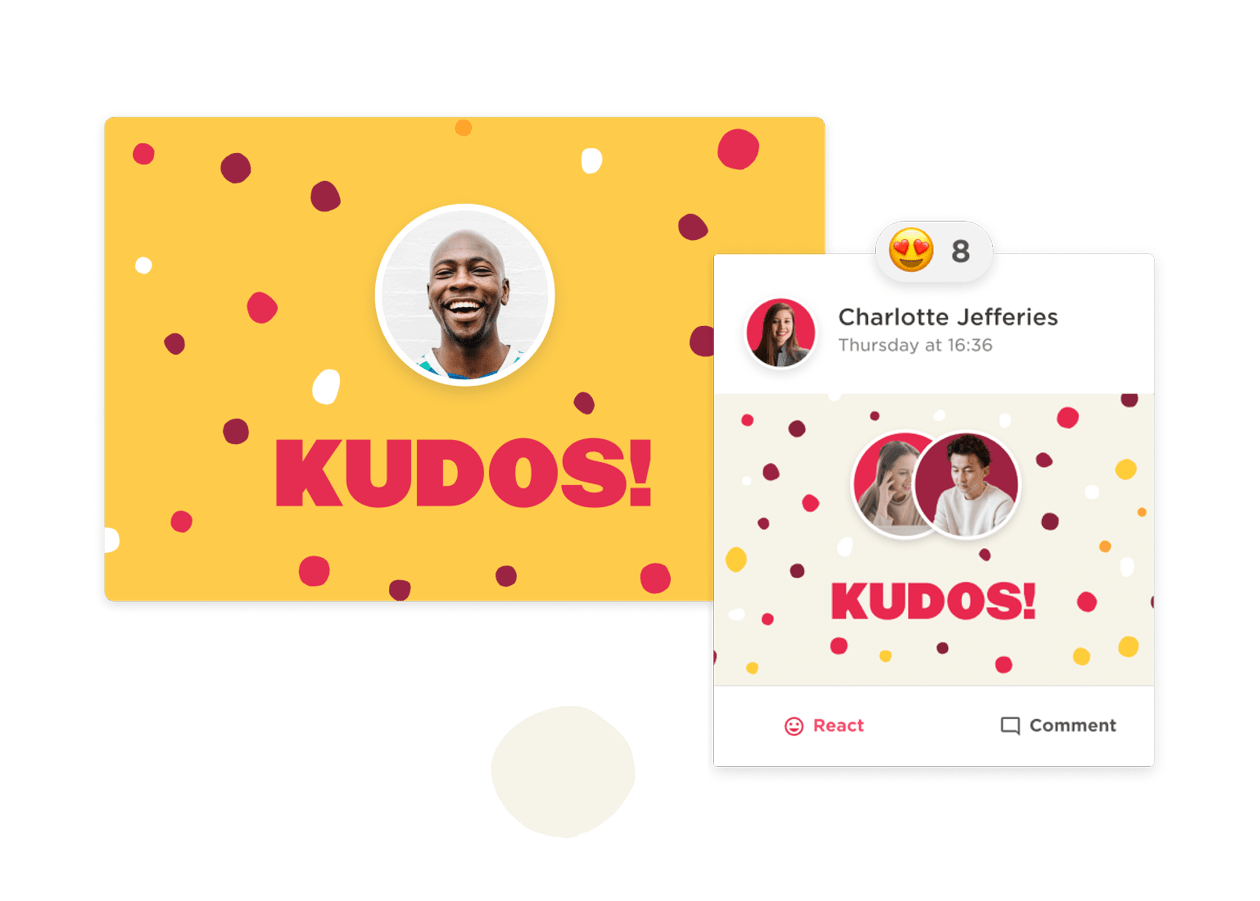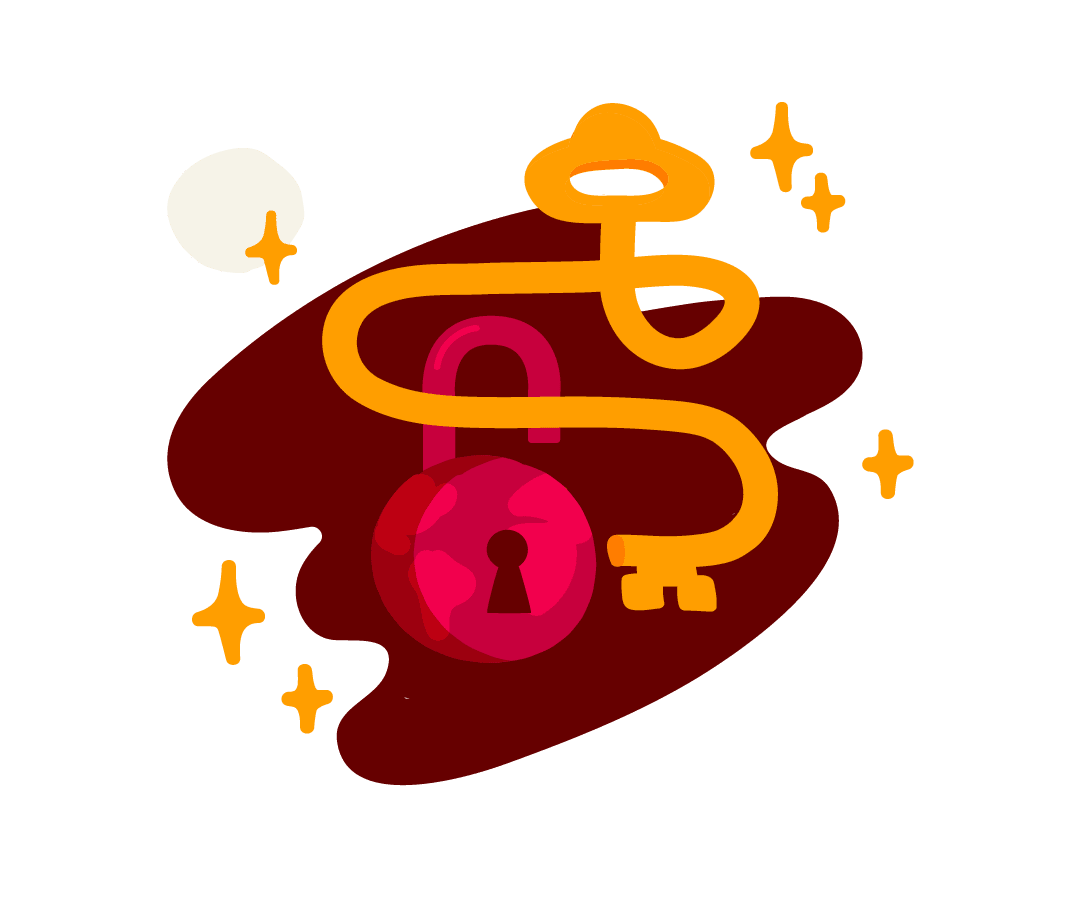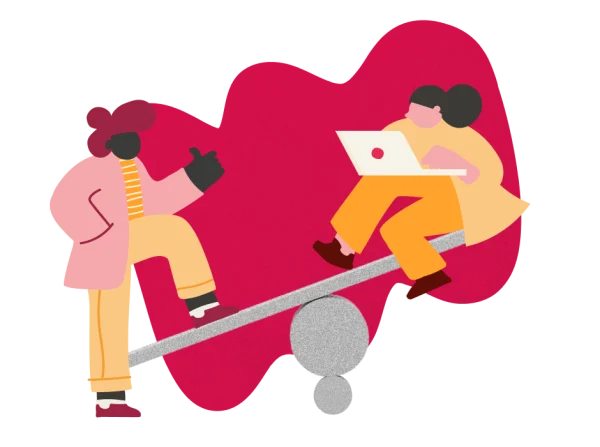HR professionals have faced several challenges in recent years. First came dramatic shifts toward remote work and hybrid work fueled by the pandemic and changing working practices. Then, the looming global recession has led to tightening budgets, and ever-increasing demands as more and more companies become aware of the importance of wellbeing and happiness as they seek to recession-proof their businesses.
For HR professionals, that has meant a whole host of extra responsibilities for reinforcing a positive and productive company culture on top of their day-to-day operations. All too often, this has meant that the happiness and wellbeing of HR professionals themselves have been overlooked.
So how can you leverage HR practices to help guide your company through these difficult times without increasing burnout? The answer lies in finding new ways to collaborate with managers throughout the company. Working with managers can help streamline essential processes, create efficiencies, and positively affect employee engagement by helping people to be happy at work. Strong partnerships between HR and managers are critical for fueling a positive wellbeing cycle because effective HR, managers, and people drive organizations forward, even in times of recession.
In this guide, we will cover five important ways that HR can empower and leverage managers to:
- Oversee performance management
- Inform compensation management
- Recognize accomplishments
- Manage onboarding and offboarding
- Engage in learning and development
If you’re looking for ways to support your HR team and strengthen management relationships, these are all great places to start.
#1 Oversee performance management
While in most companies, HR is responsible for establishing and overseeing the performance management process; it’s the managers that are tasked with facilitating the hands-on parts of performance reviews. Unfortunately, managers are often already overloaded, and performance management can end up at the bottom of their already full to-do list. This makes for a less satisfying and effective experience for all parties involved.
A recent Gallup survey found that 95 percent of managers are dissatisfied with their organization’s review system, so it’s no surprise that such reviews can tumble even further down their lists of priorities. When time gets tight, tasks that feel less urgent or less useful are usually the ones to be sacrificed.
One way to alleviate this bottleneck is for HR professionals to encourage managers to approach performance management as an ongoing dialogue rather than a once-a-year formal event. Your HR team can also establish ways for managers to get people more invested in the process by providing them with standardized forms that include questions for team members to answer before their performance check-ins and meetings.
Taking this approach is particularly effective when it comes to remote workers. Shockingly, just 16 percent of North American employers surveyed by WTW reported altering their performance management approach to align with remote and hybrid work models. Clearly, some changes are needed here. By building routine checkpoints and creating less formal discussion opportunities via status calls and virtual one-on-ones, you can help managers stay connected and share feedback with their remote team members without additional HR involvement.
Even when performance management reviews happen more frequently, inconsistencies and biases can affect the process. To address this issue, consider alternative methods of conducting performance evaluations. According to the Society for Human Resource Management (SHRM), 360-degree reviews in which feedback is collected from the individual’s colleagues and other managers can help give a fuller picture of employees’ capabilities and contributions. Another approach can be a “calibration committee,” which reviews and adjusts a manager’s subjective rating of an employee’s performance based on a broader view of reasonable expectations and achievements across the organization. It can be a great way to help managers refine their scoring and generate more effective performance reviews.
Regardless of the specific performance management methodology used, there must be a system to support HR, managers, and your people in maximizing the program’s effectiveness and ensuring a fair and unbiased experience. We recommend using a human resources information system (HRIS) with built-in performance management to maximize efficiency, streamline the process, and support everyone involved. Key performance management features to look for in an HRIS include customizable scheduling and automated reminders, actionable goal setting that aligns with department and company strategies, and accessible reporting that’s easy to review and analyze.
Running seamless performance reviews in Bob
Running performance reviews in Bob is easy and flexible. You choose how to manage the process and how often. Using one centralized platform, you can keep all stakeholders in the loop and seamlessly manage 360-degree performance reviews, storing evaluations from peers, managers, and direct reports in one place. Sample review questions help to unify the process company-wide and save time.
Performance reviews don’t need to be a formal, once-a-year process. Bob helps you to empower continuous employee growth by charting clear goals and growth plans. Whether you are working remotely or in the office, Bob enables you to run a fair and unbiased review process. All people data, such as employee achievements and promotions, is easily accessible in Bob, further improving your HR efficiency.
#2 Inform compensation management
An effective compensation management process benefits both your company and its people. Guided by members of senior management, your compensation strategy plays a huge role in maintaining equilibrium within teams and improving the happiness and satisfaction of team members.
Performance-related pay, such as incentives and merit bonuses, positively impacts employee engagement. HR collaboration with managers can make this process easy and clear to implement: While HR leaders guide your overall strategy, managers can help by clearly defining job roles and associated salaries.
Managers have the most visibility regarding each job. Working alongside their team members, they understand the skills, abilities, and background required to be successful in a role. Their daily experiences and observations can provide valuable data for job descriptions and job-leveling decisions. Managers can also help conduct compensation reviews to ensure no pay gaps within your company.
Regarding compensation management, collaborating with managers requires closely exchanging sensitive information. Doing this with outdated compensation tools such as databases or spreadsheets makes achieving clarity harder. To empower managers to help with compensation management, you need an effective system.
Investing in a modern compensation management system alleviates the burden by providing accurate and up-to-date data. In addition, a digital system can provide customizable reports that give managers greater visibility, giving them the information they need to communicate with their people about compensation effectively. Compensation management systems also help HR leaders to become strategic in their approach, generating a compensation scorecard that provides metrics HR can analyze and use to identify any issues.
Managing a smooth compensation process using Bob
Bob helps companies make fair compensation decisions on allocating equity, bonuses, and salary increases among their people. All stakeholders involved in compensation decisions, such as HR, finance, and managers, have access to real-time data on salary, tenure, and performance via a single intuitive platform. This makes it easy to identify pay gaps and collaborate within Bob to make meaningful, equitable decisions. Bob supports multiple currencies and pay periods, enabling seamless compensation allocation across global teams, and is easily configured to support global teams.

Recommended For Further Reading
#3 Recognize employee accomplishments
Employee recognition encompasses achievements such as meeting sales goals, celebrating work anniversaries, welcoming new team members, and highlighting stellar job performances. When a company has an official and organized recognition program, people feel valued and are more likely to be engaged and motivated at work.
When O.C. Tanner asked a survey group, “What is the most important thing that your manager or company currently does that would cause you to produce great work?” a clear pattern emerged. Thirty-seven percent of respondents said that more personal recognition would encourage them to produce better work more often. Clearly, recognition is a hugely important part of managing teams effectively.
Due to competing priorities and a lack of time, however, providing proper recognition can be forgotten. It can easily become the “nice-to-have” program that never happens, especially when your HR team’s time is under greater strain than ever.
The answer lies in collaboration with managers. HR doesn’t have to be involved in every recognition act, and managers can ensure that recognition happens and is as meaningful and powerful as possible.
The key lies in ensuring your program is straightforward and simple. Make recognition easy to give and encourage everyone in the company to participate. Empower your managers by ensuring they have the templates, tools, and resources they need to recognize their people.
Peer-to-peer recognition is also an effective way to increase engagement and boost morale. Encourage social media shoutouts and giving kudos to round out your recognition program. A guide or a quick training session can also be a good idea to help those less naturally inclined to give recognition and make it as meaningful as possible.
Once you put these tools in place, you and your teams can step back and let managers enjoy the experience of making their people feel appreciated for their efforts.
Celebrating people’s achievements and milestones in Bob
Bob makes creating a culture of employee recognition at your company easy. Use Bob’s Shoutouts to celebrate milestones such as birthdays, work anniversaries, or promotions or warmly welcome new hires. Kudos recognize outstanding individual or team achievements, such as surpassing a sales target, completing a complex project, or establishing an employee resource group (ERG). Anyone can post a Shoutout or Kudos through the platform and show their peers or managers how valued they are. Everyone else can join in the celebration by responding with comments or emojis.

#4 Manage onboarding and offboarding
Managers are at the forefront of onboarding. They’re a new starter’s first touchpoint with the organization, so managers need to provide a consistent, helpful onboarding experience. This personal connection is even more critical if your people are working remotely.
A strong onboarding process can have a lasting impact on productivity and retention, helping new team members to get up to speed faster. According to Tracy Brower, vice president of workplace insight at office furniture manufacturer Steelcase, managers have an essential role to play. “The best leaders are present, accessible, and super responsive,” Brower says. “These managers create personalized onboarding journeys, have one-on-ones early and more often, and prioritize replying to their remote team members, especially those who are new.”
Another excellent way for managers to ensure successful onboarding is by assigning an ambassador or buddy to the new joiner. It’s as simple as matching an experienced team member with a new hire to help make introductions, answer questions, and initiate regular check-ins. SHRM advises assigning two buddies to a new remote worker: one from within their new team and one from elsewhere in the organization to help broaden their network.
You can support managers to deliver an impactful onboarding experience by providing a clearly defined plan with tools that make it easy to follow each step of the journey. To assist remote onboarding processes, consider using an HRIS to facilitate greater manager involvement. This can significantly reduce the manual administrative tasks your team needs to complete, allow new joiners to complete necessary forms online, and send automated reminders to managers to ensure milestones are achieved and the process stays on track.
As crucial as a robust onboarding process is, the same attention and effort should also be applied to employee offboarding. Offboarding significantly impacts your company’s image—as well as how much you’ll benefit from boomerang employees—so it’s important that everyone leaves feeling as positive as possible about your organization. An effective process can also help ensure all of the required administrative tasks are completed and that any helpful feedback or lessons can be gathered and shared.
Follow an offboarding checklist to empower managers to ensure a successful exit, giving them the essential steps in a streamlined process that includes online access to forms and other key documentation, along with automated reminders.
Seamless onboarding and offboarding with Bob
Bob helps make both onboarding and offboarding positive and smooth experiences. With Bob, you don’t need to wait until a new hire’s first day to help them feel engaged and part of the company. Set up a preboarding workflow for uploading personal information and documents directly to Bob, and get all the paperwork out of the way well before that first morning rolls around.
You can also set up task lists for the new hire’s manager to follow and for IT to purchase the necessary equipment and set up the new joiner’s workstation. By setting everything up in advance, Bob helps you empower managers to take control of onboarding, paving the way for a more positive and easy experience for everyone.
Similarly, when someone leaves, Bob can help you ensure everything’s covered, from returning equipment to scheduling an exit interview. It also enables you to collect valuable insights so that any lessons learned from feedback sessions can lay the foundations for positive changes in the future.

#5 Engage in learning and development
Even in medium-sized organizations, HR may not have the resources to facilitate learning and development opportunities for everyone. While HR can provide comprehensive and robust learning and development (L&D) programs, it is up to individual managers to work with their team members to define and set specific development goals and to communicate how those goals relate to advancement opportunities within the company.
Andy Grove, the legendary founder of Intel, once said: “There are only two ways in which a manager can impact an employee’s output: motivation and training. If you are not training, then you are neglecting half the job.” For learning and development to be truly effective, managers must closely relate their programs to their team member’s role and goals and make sure programs are truly beneficial.
Encourage your managers to take responsibility for their teams’ training and development and find ways to reinforce that training. By providing coaching and mentoring arrangements, communicating regularly with their teams, and identifying additional development areas that will have the most impact, managers can help people to make the most of available learning opportunities.
For remote workers, it’s important to help managers find more condensed or self-paced training programs rather than the traditional all-day intensive format many businesses are accustomed to.
According to SHRM, people will forget 70 percent of the information they learn within a week of training and 87 percent within a month. Providing opportunities to reinforce and contextualize learning is key to making it stick. When learning happens in an extended time frame and managers reinforce concepts within the normal course of work, the effectiveness of training will ultimately increase. In addition, managers can then see firsthand how their employees apply the new knowledge to their daily work.
Creating a culture of learning and development with Bob
As a powerful people management platform, Bob was designed to empower company culture and put employee growth front and center. Using Bob, HR, managers, and employees can easily plan, track, and celebrate learning and development.
Bob’s Goal Setting feature enables HR and managers to assign training as a goal for team members. This can be included in onboarding, ensuring everyone completes a specific training session. Alternatively, people can set their own goals, creating timelines for personal achievements over the following month, quarter, or year.
You can also encourage people to recognize and celebrate accomplishments using Shoutouts and Kudos, helping to create a culture of learning and development throughout your company.
Finally, Bob integrates with several popular learning management systems (LMS), enabling you to create ongoing training opportunities. Certifications and achievements can be documented on people’s timelines to recognize their accomplishments and for future reference in appraisals or as part of workforce planning.

Leveraging managers: The key to beating burnout in difficult times
As the HR workload grows, it’s only fitting to look for ways to maximize collaboration with other departments so that you’re sharing responsibility for preserving company culture and keeping everyone happy and engaged.
Managers are at the forefront of business operations, so implementing systems that make it easy for them to take an active role is key. They should be at the heart of performance and compensation management, recognition, onboarding and offboarding, and learning and development.
Strong collaboration between your HR team and managers, facilitated by the right tools and systems, will ultimately deliver the experience that keeps employees satisfied and engaged with the organization and protects your HR professionals from burnout.
